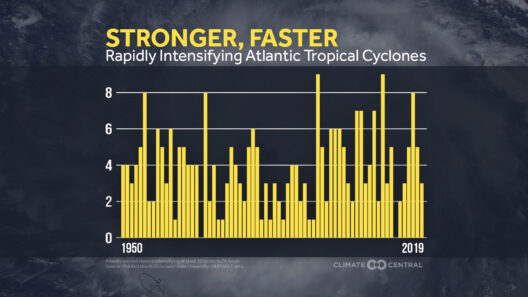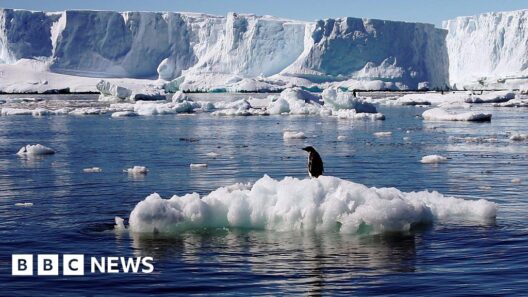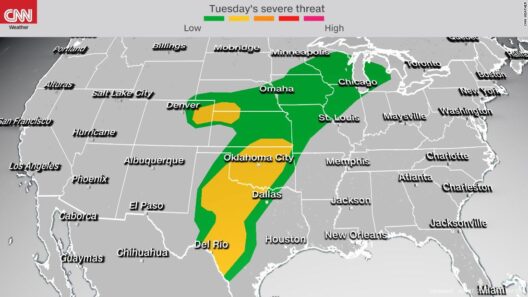Greenhouse gases (GHGs) are pivotal players in the ongoing drama of climate change. At a basic level, many individuals are aware of their existence and their association with global warming. However, the complexities surrounding these gases warrant a deeper examination. This discourse will elucidate not only the fundamental role of GHGs in temperature regulation but also the intricate systems and feedback loops that magnify their effects, the socio-economic ramifications of their emission, and the possible pathways toward mitigation.
To understand how greenhouse gases drive global warming, it is essential to first acknowledge their composition. Common greenhouse gases include carbon dioxide (CO2), methane (CH4), nitrous oxide (N2O), and fluorinated gases. Each of these gases possesses unique properties, influencing their global warming potential and persistence in the atmosphere. For instance, while carbon dioxide is often cited as the primary contributor to anthropogenic climate change due to its extensive emission from fossil fuels, methane, despite being less abundant, is over twenty times more effective at trapping heat over a span of twenty years. The disparity between these gases demonstrates that not all GHGs are created equal; their impact on the climate is quantifiably different.
As the atmospheric concentration of these gases rises, the natural greenhouse effect, a phenomenon that enables Earth’s surface to remain habitable, becomes exacerbated. The Earth receives solar radiation, some of which is reflected back to space while the rest is absorbed and re-radiated as infrared radiation. Greenhouse gases absorb and emit this infrared radiation, thereby retaining heat within the atmosphere. This mechanism is akin to a blanket snugly wrapped around the planet, preventing heat from escaping. However, as human activities such as deforestation, industrial processes, and agricultural practices continue to increase the volume of greenhouse gases, this blanket becomes increasingly thick, resulting in an overall rise in global temperatures.
Beyond the straightforward mechanics of greenhouse gas emissions lies an intricate web of feedback loops that complicate the effects of climate change. For instance, the melting of polar ice caps is one major concern; as ice melts, less sunlight is reflected back into space (a phenomenon known as albedo), and instead, dark ocean waters absorb more heat. This creates a vicious cycle, further accelerating global warming. Similarly, thawing permafrost in Arctic regions releases stored methane, which, as previously mentioned, significantly intensifies warming. Thus, the interplay between these feedback mechanisms and GHG emissions complicates the narrative surrounding climate change.
Moreover, the socio-economic ramifications of greenhouse gas emissions are profound and far-reaching. The industrial revolution marked the beginning of an era characterized by relentless fossil fuel extraction and consumption. This transition catalyzed unprecedented economic growth but also set the stage for escalating climate-related challenges. Low-lying coastal communities are increasingly vulnerable to sea-level rise, while extreme weather events are becoming more frequent and severe. The repercussions are not merely environmental; they also manifest in social injustice as marginalized populations bear the brunt of climate impacts. The poorest communities, often with the least capacity to adapt, find themselves disproportionately affected by flooding, heatwaves, and food insecurity. Therefore, climate justice becomes an essential component of the discussions surrounding greenhouse gas emissions and climate action.
In light of these realities, mitigation strategies must be multi-faceted and innovative. Transitioning to renewable energy sources, such as wind, solar, and hydropower, presents a viable solution for curtailing GHG emissions. Governments worldwide are beginning to recognize the critical importance of fostering sustainable practices, evident in international agreements like the Paris Accord. These accords aim to limit global warming to well below 2 degrees Celsius above preindustrial levels. However, collective action is paramount; individual choices—like reducing energy consumption, utilizing public transport, and supporting sustainable agricultural practices—can collectively contribute to larger environmental objectives.
Investing in technological advancements also holds tremendous potential for reducing greenhouse gas emissions. Carbon capture and storage (CCS) technologies, which involve trapping carbon dioxide emissions from power plants and storing them underground, represent an innovative approach to mitigating climate change. Similarly, advancements in electric vehicle technology can lead to substantial reductions in emissions from the transportation sector. The challenge, however, lies in scaling these technologies for widespread use, and ensuring they are economically viable and accessible to all.
Education and advocacy play a critical role in the fight against climate change and greenhouse gas emissions. Awareness campaigns that elucidate the science of climate change can empower individuals and communities to engage proactively with the issue. A well-informed populace is more likely to advocate for necessary policy changes and hold corporations accountable for their environmental impact. Grassroots movements have historically driven policy reforms, indicating the profound ramifications of civic engagement on myriad environmental issues.
In conclusion, the intricacies of greenhouse gases and their role in global warming extend beyond mere scientific observation. They reveal a narrative that intertwines environmental, social, and economic threads. These gases serve as a window into our broader ecological predicament, highlighting that our interconnected existence demands a systemic approach to climate challenges. Resolving the climate crisis necessitates not only an understanding of greenhouse gases and their effects but also a commitment to collective responsibility and action. The challenge ahead is arduous, but through collaboration and innovation, it is possible to turn the tide on climate change and safeguard the planet for future generations.







